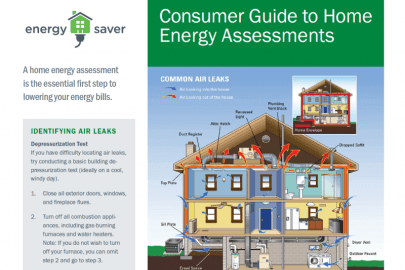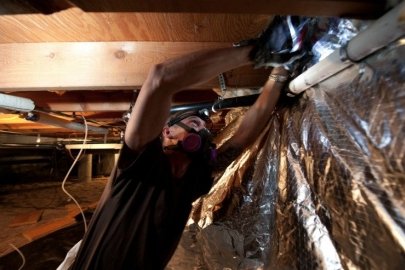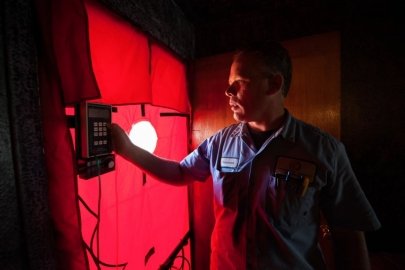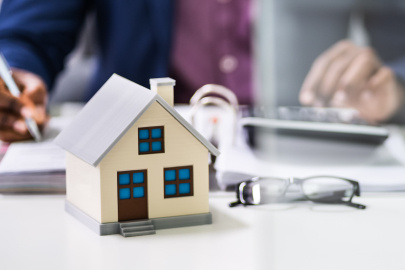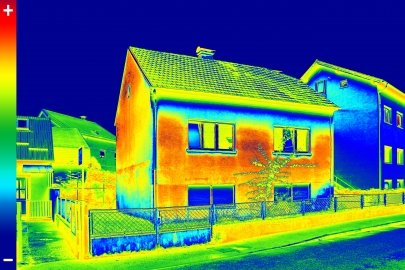We are in the middle of Energy Awareness Month, and there is no better way to be aware of your energy use at home than conducting a home energy assessment. Autumn is a great time to start thinking of a home energy assessment, also known as an energy audit, so that you can prepare your home for winter, saving energy and money in the process.
The main purpose of an energy assessment is to determine where energy is being lost in your home so you can evaluate what measures can be taken to make your home more energy efficient. Assessments can be as simple as a do-it-yourself walk through with a checklist, or they can be very detailed, using specific tools and techniques to pinpoint air leaks. Assessments also determine the efficiency of your home’s heating and cooling systems, and ways to conserve hot water. Higher than normal energy bills may hint at the inefficiency of your appliances and heating and cooling equipment.
A do-it-yourself energy assessment is the simplest and most common method of conducting an energy audit. Go room-by-room to check for air leaks. There are many potential sites for air to leak into or out of your home, including: windows and doors, gaps around pipe and wire feedthroughs, electrical outlets, foundation seals, mail slots, exhaust fans, attics, garage doors, siding cracks, and old caulking. If you've lived in your home for some time, you already may be familiar with areas that get drafty as the cold, wintry weather approaches. Check insulation levels where possible. Look at the age of your heating and cooling equipment, look through past maintenance records and maintenance schedules, and check to see if filters are clean. Review the types of lighting in your home and explore more efficient alternatives. Be sure to keep a checklist of areas you inspected and problems you found. This list will help you prioritize your energy efficiency upgrades.
If you’re somewhat computer savvy, you may be interested in using a computer program to conduct a more thorough energy assessment. Home Energy Saver and Home Energy Checkup are two free web-based do-it-yourself residential energy audit tools. These tools can help you determine the savings you can expect from making specific energy upgrades, and thus help you prioritize improvements to make. Or try the ENERGY STAR® Home Energy Yardstick to compare your home's energy efficiency to similar homes across the country and get recommendations for energy-saving home improvements from ENERGY STAR.
Another option is to pay a professional service company to conduct an advanced energy assessment on your home. Auditors often use tools such as blower doors, infrared cameras, digital surface thermometers, and smoke pencils to detect leaks in the building’s envelope—your home’s surface area exposed to the outside. They may conduct a building pressurization test that measures the leakiness of the building envelope, or a thermographic inspection that reveals the often hard-to-detect areas of infiltration and areas where insulation is missing. These “house doctors” will generate a report with the results of their tests. This report typically includes a list of where you are wasting energy, what improvements you can make, estimates on what these improvements will cost, and what your annual savings will be should you make the recommended improvements. In some cases, the house doctors will carry out some energy-conserving measures on site at the time of the audit. Ask beforehand to find out which of these services the company provides and what the fees are. These professional tests can be expensive, but the savings after upgrades can be considerable.
You can locate professional energy assessment companies by first contacting your local electric or gas utility to see if they offer free or discounted energy assessments to their customers or if they can recommend local auditors. Your local government or state energy office may help you identify a local company or organization that performs energy assessments. They may also have information on how to do your own assessment. Low-income residents should contact their weatherization office.Two other good resources that can help locate a professional energy assessment company near you are Home Performance with ENERGY STAR and Residential Energy Services Network.
If you’re planning to make extensive energy improvements, you may wish to think about getting an energy rating for your home with the energy assessment, and then applying for an energy mortgage. An Energy Improvement Mortgage finances the energy upgrades of your existing home in the mortgage loan using monthly energy savings.
Subscribe to receive updates from Energy Saver, including new blogs, updated content, and seasonal energy saving tips for consumers and homeowners.


